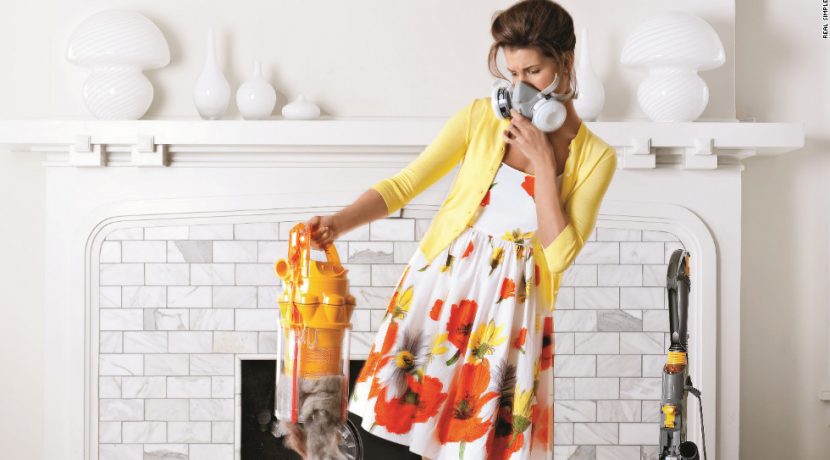Key Steps:
- Top dusting technique: start at the top and work your way down.
- After dusting: vacuum the carpets to catch any loose particles that have escaped.
- Prevent dust and odours: make sure you open the windows for at least 10 minutes a day to purify the air.
Dusting in the home can sometimes seem like a never-ending task, but don’t worry – it is a battle you can win. Dust is made up of particles of dead skin, pet hair, dust-mites, and pollen, amongst others, so it’s no wonder failing to dust surfaces can result in bad smells as well as an unsightly appearance. Effective dust removal and prevention can solve any problems with unwanted odours and leave you with a healthy and allergen-free home. All you need is the right equipment and a few strategies to keep your household dust and odour-free.
How to Remove Dust and Odours
Ideally, these steps should be taken one or two times a week to maintain a healthy, allergy-free environment – and one that smells good as well! Always start your dusting routine at the top of the room, with the tallest items of furniture, working your way down wards.
- For shelves and hard surfaces, a damp duster or cloth is more effective than a dry one, as it will trap dust rather than moving it around. Alternatively, an ostrich feather duster will produce good results, as the feathers’ electric charge attracts dust without dispersing it back into the room.
- For wallpaper and paintwork, use a dry rubber sponge to remove dust, though dusters and a mild cleaning agent will also work well on glossy paintwork and skirting boards.
- For rugs and carpets, a vacuum cleaner will be your best weapon in the fight against dust – models with HEPA filters are the most efficient at trapping the smallest particles. Vacuum after dusting to catch any loose dirt and remove the musty smell.
- For curtains and seating upholstery, use your vacuum’s low setting and brush.
- Hard floors or vinyl should be mopped rather than swept with a dry brush, as this will stop dust – and mustiness – from returning straight away.
- For hard-to-reach areas, or technical equipment like computer keyboards, use air dusters, or a compressed gas canister to blast dust out of cracks and crevices.
- Use a fragrant cleaner to infuse your rooms with a scent that you like, or add a few drops of your favourite essential oil – perhaps lemon or tea tree – to the damp duster you use to dust your furniture.
How to Prevent Dust and Odours
Frequent dusting tackles the existing problem zones in your home, but there are lots of ways you can reduce the risk of dust and odours returning:
- Open windows as often as you can. Air purity is important for both dust prevention and deodorising. In cold weather, open windows for 10 minutes to get a short blast of fresh air.
- Consider using an air purifying system – these would need to be set up in every room to be thoroughly effective.
- Change the filters in your ventilation, air-conditioning, or heating system, as these can harbour dust and expel it back into the air.
- When cooking or using the bathroom, employ an extractor fan to redirect grease, dirt, and odours outside.
- Shampoo carpets regularly to give them a deep-clean or have them professionally steamed to prevent a build-up of odours.
- Squirt curtains and soft furnishings with a fabric deodoriser every week. Wash detachable fabrics in the washing machine to get the dust off, or have them dry-cleaned at least once a year.
- Upholstery and carpets are the biggest harbourers of dust and odours, so consider replacing your settee with a leather model, putting down hard flooring instead of carpet, or exchanging curtains for blinds.
- Change your bedding once a week, whenever possible. To reduce the risk of dust-mites, use a hypoallergenic mattress cover.
- Take rubbish out regularly, not just when bins are full.
All rights reserved to the initial publisher for Cleanipedia
Collected and published by Arms &McGregor International Realty® editorial team. Get in touched with us at [email protected].

